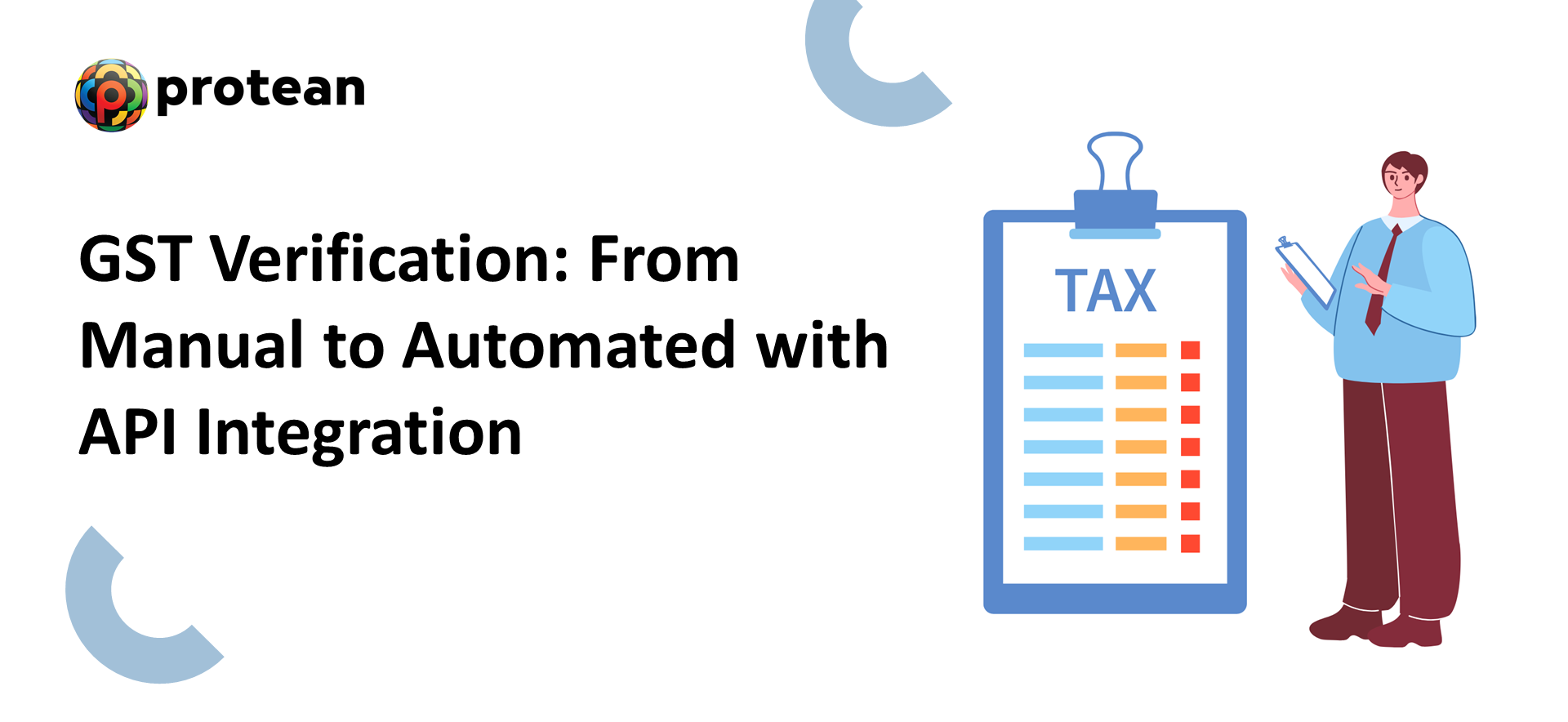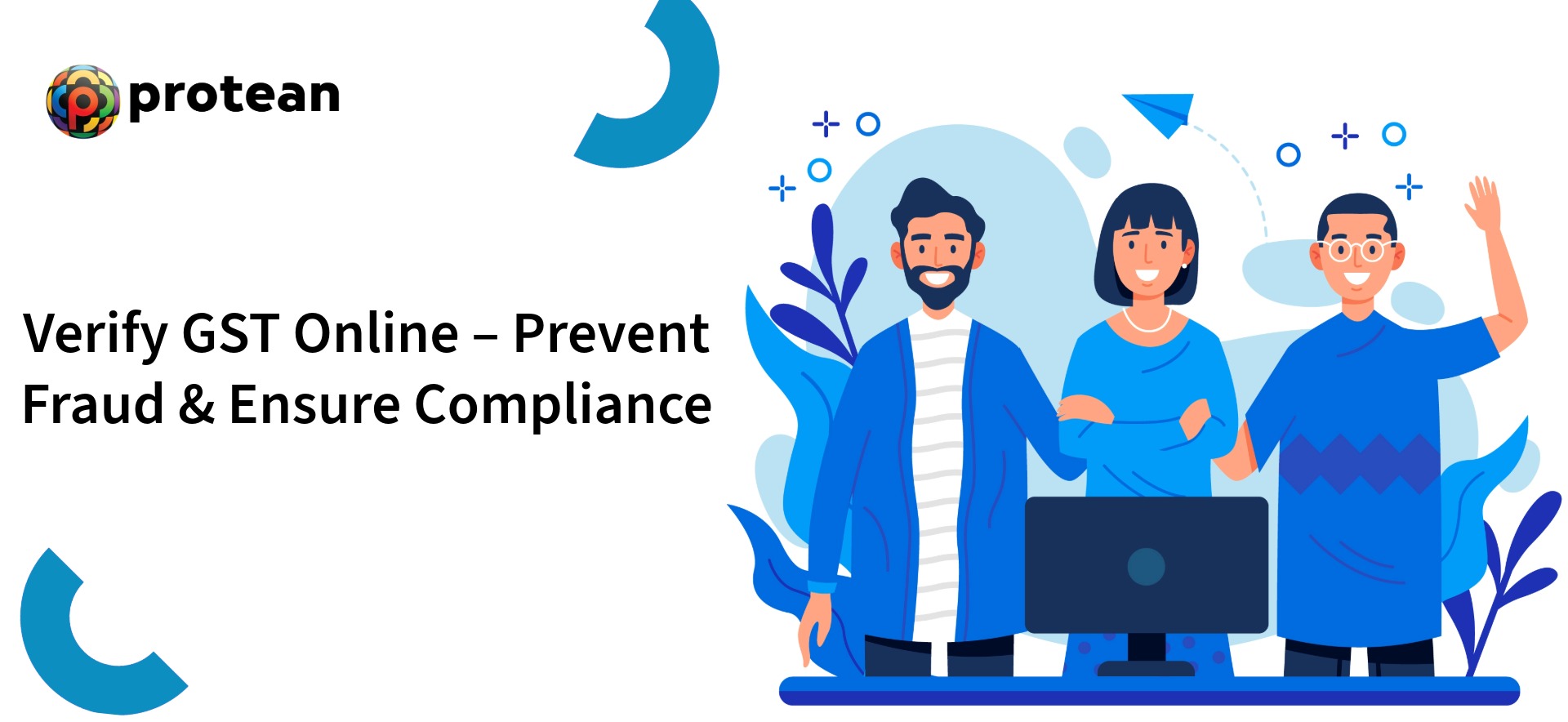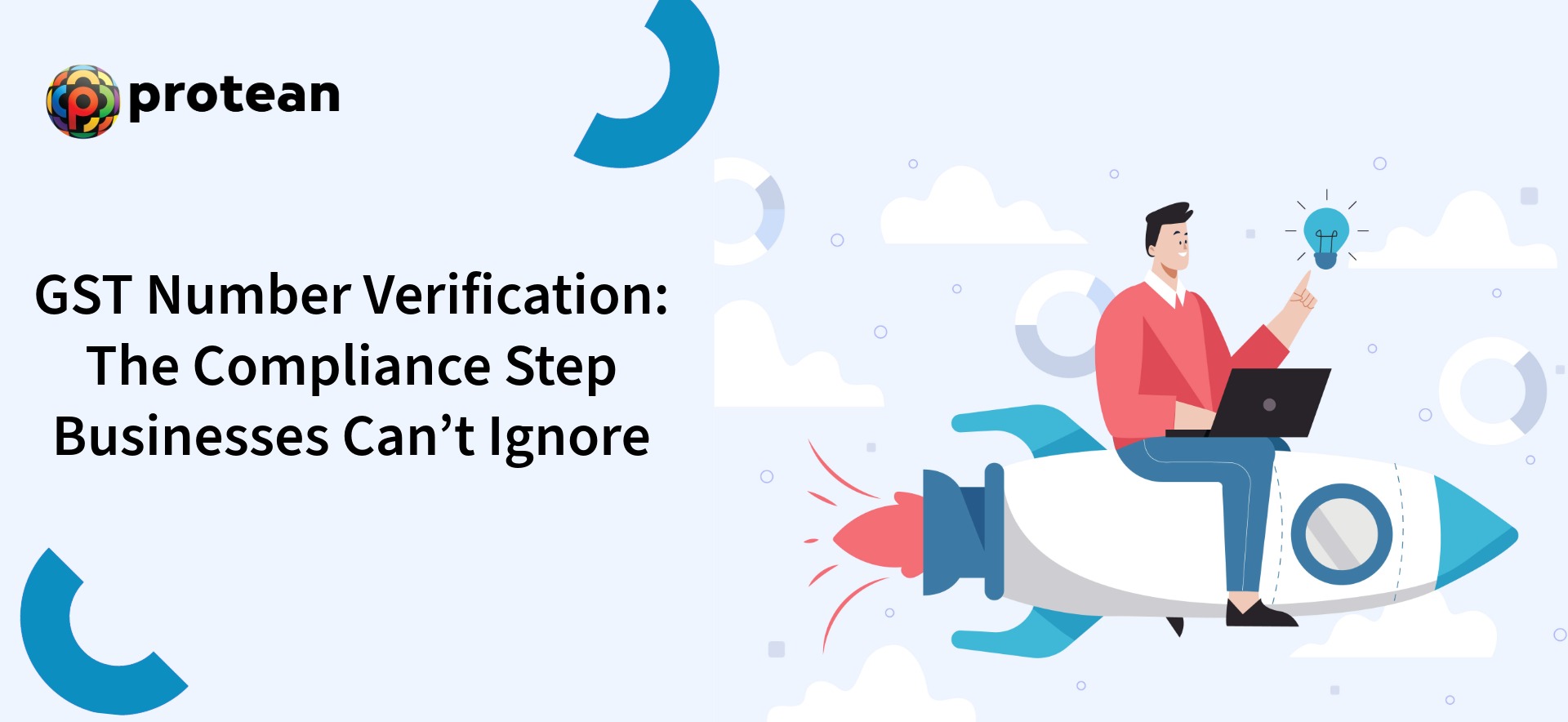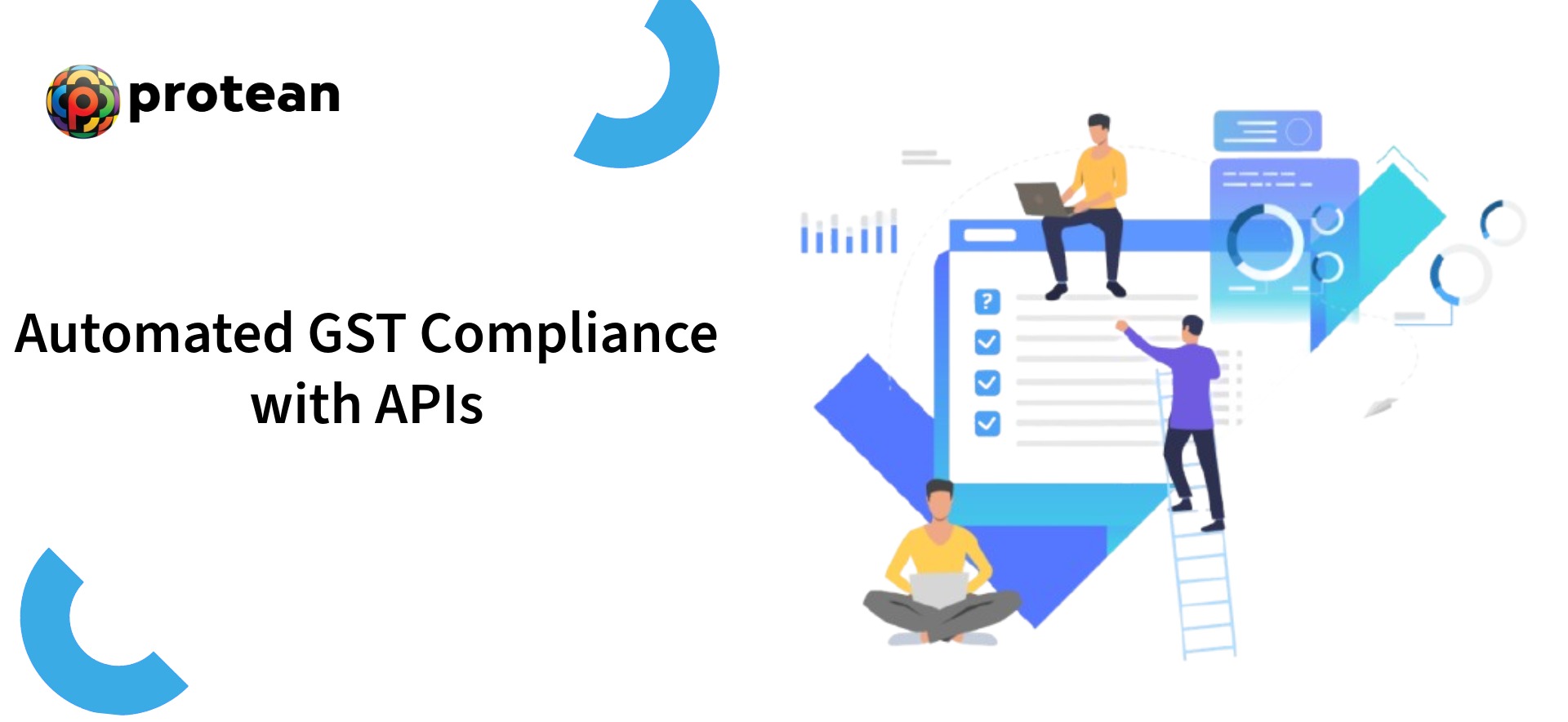Blogs
GST Verification: From Manual Hassles to Automated Efficiency with API Integration
Speed and accuracy are everything in the world of modern business. Managing compliance is a critical but often challenging task for finance and procurement teams. One of the most fundamental requirements is GST Verification—the process of checking the legitimacy of a vendor's GST number before making a transaction. Traditionally, this meant a manual, time-consuming effort that was prone to errors and exposed businesses to significant risks.
Today, that process has been revolutionized. The shift from manual checks to an automated system powered by an API Integration has become a game-changer. This will guide you through why this change is essential for every business, how it works, and the impact it has on your operations and bottom line.
What is a GST Verification API?
An API (Application Programming Interface) is essentially a digital bridge that allows different software applications to communicate with each other. A GST Verification API is a specialized tool that provides programmatic access to verify FST numbers by connecting to the official GST Network (GSTN) database.
Your company's software (like an ERP, accounting, or procurement system) can send a GST number to the API when you use a GST Verification API. The API then instantly checks the number against the official government database and sends back a response with details like the legal name of the business, its address, and its current registration status. The entire process happens in milliseconds, without any manual intervention.
This kind of API Integration with your existing software is what turns a manual, reactive process into a proactive, automated workflow.
The Cost of Manual GST Verification
The traditional method of checking a GSTIN is more than just a minor inconvenience; it carries a heavy cost that can hinder business growth.
1. The Time Sink
Finance teams spend countless hours manually searching and verifying GSTIN details for every single new vendor or customer. This is time that could be spent on strategic financial analysis or planning.
2. The Risk of Errors
Manual data entry is a leading cause of mistakes. A single wrong digit in a GSTIN can lead to incorrect filings, mismatched data, and, eventually, a notice from the tax authorities.
3. The Fraud Vulnerability
It's difficult to verify the real-time status of a GSTIN manually. This leaves a business vulnerable to accepting fraudulent invoices from fake or inactive vendors, which can result in financial loss.
4. The Compliance Burden
Ensuring every GSTIN is correct and active at the time of invoicing is a monumental task given the volume of transactions. While the GST system maintains detailed audit trails, managing and integrating them can be complex, making compliance more challenging.
These pain points highlight a clear need for a solution that is not just faster, but fundamentally more reliable.
| Also Read: Why GST Online Verification is Crucial for Vendor |
The Strategic Advantages of API Integration
Implementing a GST Verification API is a strategic decision that offers far-reaching benefits for your business.
1. Instant & Automated GSTIN Verification
You can embed GSTIN Verification directly into your workflow with an API. A new vendor can have their GST number verified instantly at the time of onboarding. An invoice can be checked in real-time before it's processed for payment. This automation eliminates the time a team member would spend on manual checks, and it ensures that you are always working with accurate, up-to-date information.
2. Protecting Your Input Tax Credit (ITC)
This is arguably the most significant financial benefit. Your vendor's GSTIN must be valid and active to claim Input Tax Credit on a purchase. If you transact with a fraudulent or deregistered vendor, you risk losing your ITC claim, which can result in a direct financial loss. An automated GST Verification system ensures that every GSTIN you deal with is verified as genuine and active at the time of the transaction, safeguarding your ITC.
3. Enhanced Fraud Prevention
Automated GST Verification provides a powerful defense against fraud. It helps you identify fake invoices and fraudulent vendors who use incorrect GSTINs. You can ensure that you are only transacting with legitimate and compliant businesses by instantly cross-verifying a vendor's details against the official database.
4. Audit-Proof Compliance
A robust GST Verification API solution creates a clear, digital audit trail for every verification it performs. This record, which includes the date, time, and result of each check, is crucial during a tax audit. It proves that your business has taken all reasonable steps to ensure compliance, simplifying the audit process and protecting you from legal liabilities.
5. Boosting Operational Efficiency
Beyond the direct financial and security benefits, API Integration of GST Verification streamlines your entire workflow. You free up your finance, procurement, and accounts payable teams to focus on more strategic, high-value tasks by eliminating manual data entry and cross-checking. This boosts overall operational efficiency and productivity.
The Role of API Management in GST Verification
A robust API Management strategy is essential for a business to fully leverage the power of a GST Verification API. API management ensures that your API integrations are secure, reliable, and scalable. It provides the necessary tools to:
- Monitor API Usage: Track the number of calls, performance, and any errors.
- Enforce Security Policies: Ensure every API call is authenticated and authorized.
- Manage Access: Control which applications and users have API access in GST.
- Scale with Growth: Ensure the API can handle a high volume of requests as your business grows.
A strong API management framework ensures that your automated GST compliance solution remains secure and effective over the long term.
Conclusion
Relying on manual processes for gstin verification is a risk no business can afford. An automated system powered by a GST Verification API is not just a technological upgrade; it's a strategic investment in your business's financial security, operational efficiency, and long-term compliance.
You are making a conscious choice to move from a reactive, manual approach to a proactive, automated one by embracing API Integration for GST Verification. This allows you to protect your Input Tax Credit, prevent fraud, and build a more reliable and scalable business. The future of compliance is automated, and the key to that future is a well-managed GST Verification API.
Frequently Asked Questions (FAQs)
Q1: What is a GSTIN verification?
GSTIN verification is the process of checking a business's GST number against the official government database to confirm its validity and active status.
Q2: Is it mandatory to do GST verification for my vendors?
While not explicitly mandated for every transaction, GST verification is a crucial practice to ensure you canlegally claim Input Tax Credit, protecting your financial interests.
Q3: How does an API work for GST verification?
An API provides a digital bridge that allows your software to instantly send a GSTIN to the government database and receive a response about its status and associated details, all without manual intervention.
Q4: What information does the GST verification API return?
It typically returns details like the legal name, business type, registration date, and the current active status of the GSTIN.
Q5: What is the role of API management in GST Verification?
API management ensures that the GST Verification API is used securely, reliably, and efficiently. It handles monitoring, security policies, and scalability, which is critical for a corporate environment.






